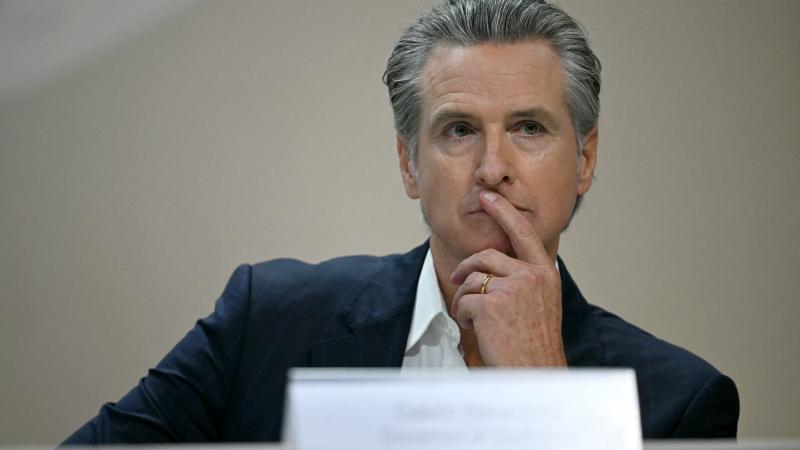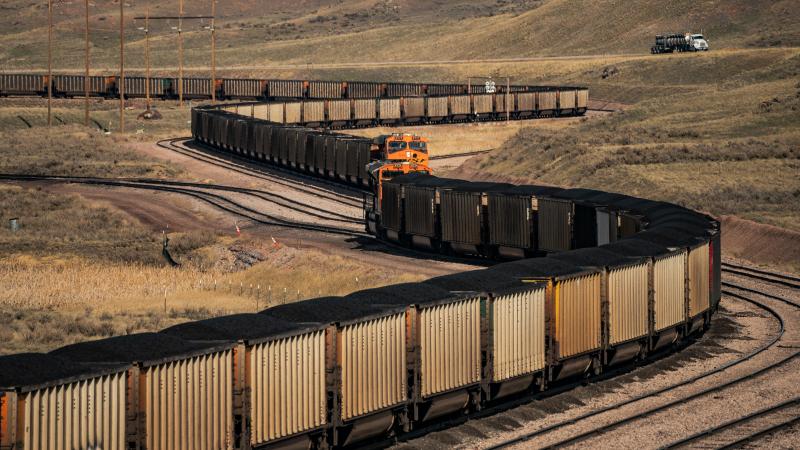Testimony at offshore wind hearing reveals the U.S. could experience 48 blade failures annually
A single blade failed in calm weather and scattered shards of fiberglass and debris across beaches of Nantucket. President Joe Biden wants 3,000 turbines built off America's shores by 2030. Based on estimated failure rates, the U.S. could see dozens of these failures every year.
In the wake of the blade failure on the Vineyard Wind development — one of the first offshore wind farms in operation in the U.S. — opposition to offshore wind development on the East Coast is growing.
Rep. Jeff Van Drew, R-N.J., and Rep. Scott Perry, R-Pa., held a hearing examining the impacts of offshore wind on the East Coast, in Brigantine, New Jersey, a small town on the Jersey Shore. The hearing was prompted by the Atlantic Shores wind project, which the Bureau of Ocean Energy Management approved in July. It will include 195 turbines, 850-feet tall off the coast of New Jersey.
“These would be the largest wind turbines in the world. We're going to be an experiment for the world right here at your Jersey Shore. Dozens of these turbines will be highly visible and maybe even audible, particularly in Brigantine,” Van Drew said.
Meghan Lapp, fisheries liaison and general manager at Seafreeze, Ltd., a fishing company based in Rhode Island, testified that in 2014 an offshore wind insurer estimated that out of 700,000 blades operating globally at the time, 3,800 failed each year from a range of causes, including lightning damage, human error and manufacturing defects.
Lapp estimates that with 3,000 turbines operating off the East Coast, the U.S. could see 48 blade failures every year like the one in Nantucket.
The Biden/Harris administration is pursuing 30 gigawatts of offshore wind power by 2030. Offshore wind turbines produce 8 to 12 megawatts of power when the wind is blowing. With an average of 10 megawatts per turbine, it will take 3,000 turbines to meet the administration's offshore wind goals. However, most turbines have three blades, meaning the failure rates could be three times higher than Lapp's estimate.
Incredible shift
The disintegration of a wind turbine blade off a single turbine on the Vineyard Wind project, which happened during clear weather, scattered foam, fiberglass and pieces of epoxy across the beaches of Martha’s Vineyard. Beaches were shut down for a day, and construction and operations were halted on the project.
Cleanup continues, and the Nantucket Current reported Tuesday that the Bureau of Safety and Environmental Enforcement, an agency under the Department of the Interior, is allowing the developer to resume installing towers and nacelles — but not blades.
The Wampanoag Tribe of Aquinnah in Martha’s Vineyard requested a moratorium on offshore wind development last month, and residents of Nantucket are now calling for the same, the Boston Herald reported.
Amy DiSibio, board member of ACK for Whales, brought a piece of the blade that washed up on the beach near her home to the hearing. She testified that the event has greatly shifted public sentiment toward the offshore wind industry on Martha’s Vineyard. She said the community depends on tourism, which the debris from the broken blade is impacting.
“It's been an incredible shift. The beaches were a disaster,” DiSibio said.
DiSibio recounted how long it took for Vineyard Wind to notify the local government or the public that the blade had broken off.
“To add insult to injury, Vineyard Wind kept everyone, including our local government, in the dark for nearly two days after the blade failure. In fact, they really didn't speak up at all until the first debris started washing ashore. It's bad enough their blade broke, but they shouldn't have sat on that news for nearly two days,” DiSibio said.
She said that some of the pieces of the blade are small enough that they’re likely entering the marine food chain.
Whale impacts
Prior to the blade incident, DiSibio said it was hard to get any attention to the concerns of opponents. She accused offshore wind developers of making a “strategic effort” to donate to local aquariums and environmental groups to bolster public support.
In 2022, Save Right Whales Coalition, which raises awareness of the impacts of offshore wind development on the critically endangered North Atlantic Right whale, documented a number of these donations.
While many media outlets report that there is no evidence to support the claim that offshore wind is harming whales, even though the increases in whale mortality on the East Coast began at the same time offshore wind development started, Robert Rand, owner of Rand Acoustics, LLC produced two studies, using his own time and resources, finding the impacts are likely extensive.
The towers are erected by driving 31-foot wide monopiles into the seabed floor. The noise from this activity, Rand said at the hearing, is “shockingly loud.”
“These underwater pile driving hammer blows are comparable to blasts from a 155 millimeter Howitzer cannon in the air. Such noise blasts are far too loud to be permitted anywhere near whale habitat,” Rand said.
He said that, besides the pile driving activities, the propulsion on the ships that keep them in place creates continuous noise, which creates a nearly 44 square mile area of continuous harassment for each pile being driven into the seabed.
“This represents an astounding and unprecedented level of noise pollution that will contaminate the marine environment from shore to open ocean with continuous behavioral harassment,” Rand said.
Detection challenge
Rand explained that it’s next to impossible to accurately quantify the number of marine animals killed or adversely impacted by noise.
“We can’t instrument them. We're not following them around, and most of the time we don't see them,” Rand explained.
He said that prior to construction, the impact of an offshore wind project on marine animals is estimated using models, which are based on assumptions about where the species are in the water.
“Those assumptions may look reasonable on paper, but no way to evaluate them in the water. So there's a kind of a fundamental disconnect between what the agencies are doing with models and what's actually happening in the water,” Rand said.
DiSibio illustrated this problem with an analogy in which fireworks frighten dogs into running out into the street, where they’re hit by cars.
“If you were in a mall or you heard a gunshot, you would just run. You're not really looking where you're running. And we think that that's probably what's happening with these animals, and you're not going to be able to detect that in a necropsy,” DiSibio said.
DiSibio also questioned the rationale for offshore wind development, which is that it will reduce global warming. She said the evidence for that claim is lacking, which makes the industry’s impacts all the more concerning.
“If the goal for these projects is to fix climate change, then show us in the documents where this is actually going to move the needle on that. And I think for now, the public is really beginning to ask that question. I think it's the most important question we can ask. If this isn't moving the needle on anything, then why are we destroying the environment to do it?” DiSibio said.
The Facts Inside Our Reporter's Notebook
Links
- blade failure
- approved in July
- 850-feet tall
- ACK for Whales
- 30 gigawatts of offshore wind power by 2030
- Nantucket Current reported
- requested a moratorium
- Boston Herald reports
- news for nearly two days
- Save Right Whales Coalition
- documented a number of these donations
- media outlets report
- began at the same time offshore wind development started
- Rand Acoustics, LLC
- produced two studies
















